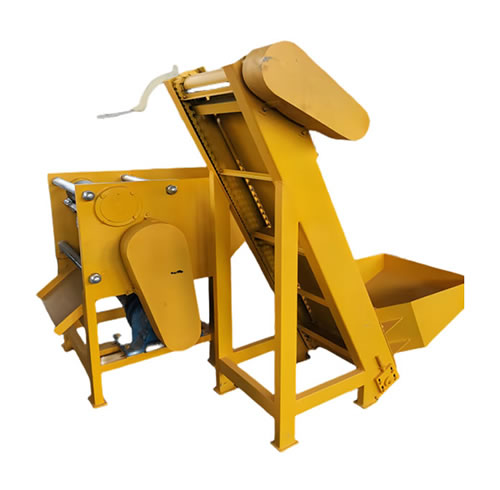The exquisite craftsmanship of Henan lithium battery discharge equipment helps the Vietnamese automobile lithium battery recycling industry to take off
# Assessment of the Impact of the Development of Vietnamese SMEs on the Market Demand for Industrial Products
**Abstract:** This assessment aims to analyze the impact of the development of small and medium-sized enterprises (SMEs) in Vietnam on the market demand for industrial products. It covers the contribution of SMEs to economic growth, innovation, and employment, as well as their influence on the diversity and competitiveness of industrial product markets.
**Introduction:** Vietnam's economy has been growing rapidly in recent years, with SMEs playing a crucial role. These enterprises not only contribute to economic growth but also have a significant impact on the market demand for industrial products.
**Economic Growth Contribution:** SMEs are a major driver of Vietnam's economic growth. They account for a large proportion of the country's GDP and provide numerous business opportunities. Their development stimulates the overall economy, leading to increased demand for various industrial products.
**Innovation and Product Diversity:** SMEs are known for their innovation and adaptability. They often introduce new products and technologies, which diversify the industrial product market. This diversity attracts more consumers and creates new demand.
**Employment Generation:** The development of SMEs creates a large number of jobs. As more people gain employment, their purchasing power increases, leading to higher demand for industrial products such as consumer goods and machinery.
**Competitiveness:** SMEs enhance the competitiveness of the industrial product market. They offer more choices to consumers at different price levels, making the market more dynamic and efficient. This competition drives the improvement of product quality and services.
**Conclusion:** In conclusion, the development of Vietnamese SMEs has a significant positive impact on the market demand for industrial products. By contributing to economic growth, promoting innovation, generating employment, and enhancing competitiveness, SMEs play a vital role in shaping the industrial product market in Vietnam. Further support and development of SMEs will continue to drive the growth of the industrial sector and the overall economy.

The environmental protection technologies for recycling and processing automotive lithium batteries include:
1. **Mechanical Separation**
- **Crushing and Screening**: The used lithium batteries are crushed into smaller particles, and then screened to separate the electrode materials from the shells and other components according to particle size.
- **Air Separation**: Utilizing the different specific gravity of the materials, the crushed materials are subjected to air separation to further separate the light and heavy components.
2. **Pyrometallurgical Processing**
- **High-Temperature Smelting**: The separated electrode materials are smelted in a high-temperature furnace to extract valuable metals such as lithium, cobalt, and nickel.
- **Vacuum Pyrolysis**: In a vacuum environment, the organic components in the battery are decomposed at lower temperatures, reducing energy consumption and emissions.
3. **Hydrometallurgical Processing**
- **Acid Leaching**: Using specific acids to leach out the metal ions from the electrode materials, which are then extracted through precipitation or electrowinning.
- **Alkaline Leaching**: Alkaline solutions are used to dissolve certain metal compounds, followed by separation and purification processes.
4. **Direct Recycling Methods**
- **Regeneration of Used Batteries**: Through repairing, recharging, and rebalancing, some used batteries with relatively good performance can be directly reused in energy storage systems or other low-power devices.
- **Secondary Manufacture**: The recovered materials are directly used in the production of new batteries, reducing the need for raw material mining and refining.
In summary, the environmental protection technologies for recycling and processing automotive lithium batteries mainly include mechanical separation, pyrometallurgical processing, hydrometallurgical processing, and direct recycling methods. These technologies aim to maximize resource recovery and reduce environmental pollution during the recycling process.

# Policy-Supported Lithium Battery Discharge Equipment Industry: Opportunities and Challenges Coexist
The lithium battery discharge equipment industry is experiencing significant growth under the support of relevant policies. Governments around the world are increasingly emphasizing the development of new energy, which has provided a strong driving force for the expansion of the lithium battery market. This, in turn, creates a favorable environment for the development of the lithium battery discharge equipment industry.
One of the main opportunities lies in the growing demand for electric vehicles. As more and more countries set targets to reduce carbon emissions and promote the adoption of clean energy, the sales of electric vehicles are on the rise. The production and testing of lithium batteries for these vehicles require advanced discharge equipment, leading to a surge in market demand. Additionally, the policy support also encourages research and innovation in this field, enabling companies to develop more efficient and reliable discharge equipment.
However, challenges also exist. The rapid development of the industry has attracted numerous participants, resulting in fierce market competition. Some small enterprises may face difficulties in terms of technology and quality control. Moreover, the lack of standardization in the industry poses potential risks, such as safety hazards and inconsistency in product performance. To address these challenges, the government and industry associations need to work together to establish strict standards and regulations, and promote technological innovation and cooperation among enterprises. Only by doing so can the lithium battery discharge equipment industry achieve sustainable and healthy development.
Overall enhancing the reuse of automotive lithium batteries in Vietnam is an important task that requires the optimization of process flows the adoption of advanced equipment and technology strict link control and other means to achieve. At the same time improving the technical content of lithium battery discharge equipment is also a key link in the reuse of automotive lithium batteries. Only by solving these problems can we truly improve the effectiveness of the reuse of automotive lithium batteries in Vietnam and promote the development of the industry. We wish customers of the reuse of automotive lithium batteries in Vietnam sincere negotiations joint efforts and embrace the infinite possibilities of the future.